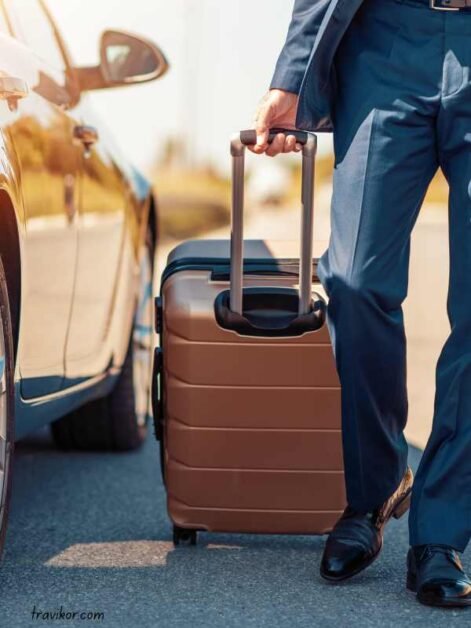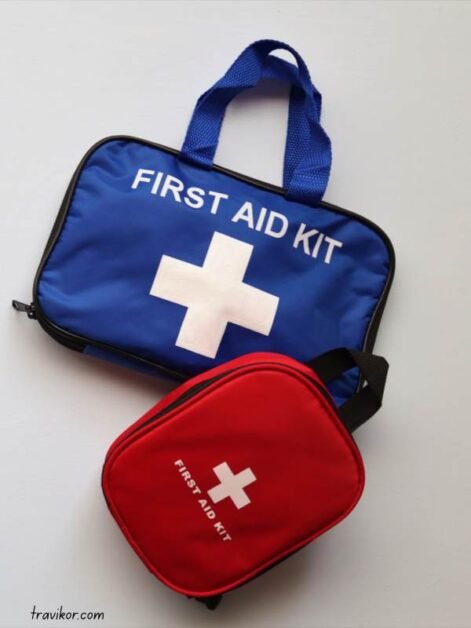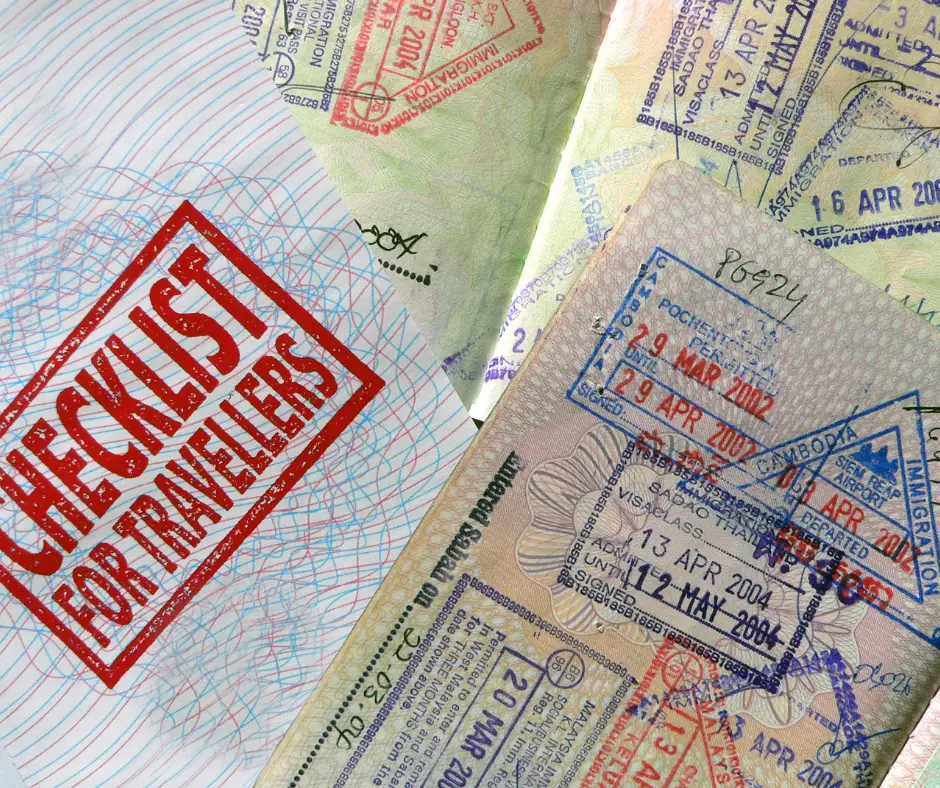Best Business Travel Security Checklists
This Business Travel Security Checklists will help you stay safe, organized and prepared.
We all travel for different reasons: Leisure, vacation, solo travel, romantic getaways, adventure trips, education trips, staycations, or even pilgrimage trips.
But in this post, we’re focusing on something specific: business travel security checklists.
One time, I was on a flight to Abuja. My seatmate was a young CEO who owned a tech startup.
He was flying to pitch his business for sponsorship and expansion to some potential investors.
As we got talking, he shared a few mistakes he’d made during past business trips, mistakes that cost him time, money, and peace of mind, which I wouldn’t want anyone to make, reason I am writing this post.
Business travel is a big part of many people’s jobs. It helps companies grow, build partnerships, and get work done face-to-face.
But with the way the world is today, staying safe while traveling is more important than ever.
In this post, we’ll talk about why security matters when you’re on a business trip and how to stay safe.
We will walk through how you can travel smart, stay protected, and still get your job done.
BUSINESS TRAVEL SECURITY CHECKLISTS
Assessing Travel Risks
Business travel exposes individuals to various risks and challenges, both known and unforeseen. Effectively assessing these risks is essential for ensuring the safety and security of corporate travelers.
✅ Identifying Potential Threats and Challenges
Before embarking on any business trip, it’s crucial to identify potential threats and challenges that may arise during the journey. These threats can range from natural disasters and political instability to health risks and security concerns. By conducting thorough research and staying informed about current events, travelers can anticipate and mitigate potential risks effectively.
✅ Analyzing Destination-Specific Risks
Different destinations pose different risks to travelers. Factors such as the political climate, socio-economic conditions, and cultural dynamics can significantly impact the safety and security of individuals.
Analyzing destination-specific risks involves understanding the local context, including crime rates, health hazards, and transportation infrastructure. This information helps travelers make informed decisions and adapt their travel plans accordingly to minimize risk exposure.
✅ Utilizing Risk Assessment Tools
In today’s digital age, travelers have access to a wide range of risk assessment tools and resources that can enhance their safety and security. These tools leverage real-time data, intelligence reports, and predictive analytics to identify potential threats and provide actionable insights to travelers.
From mobile applications to online platforms, there are numerous options available for assessing travel risks and making informed decisions before and during the journey.
By effectively assessing travel risks through a combination of research, analysis, and technology, business travelers can enhance their safety and security while on the road.
Preparing a Robust Travel Itinerary
A well-prepared travel itinerary serves as a foundational element for business travel security, ensuring that travelers are organized, informed, and equipped to handle various situations.
Here’s how to create a robust travel itinerary with safety in mind:
✅ Creating a Comprehensive Itinerary for Safety
A comprehensive itinerary goes beyond basic travel details; it includes vital information related to safety and security. This involves mapping out the locations of embassies or consulates, identifying medical facilities, and noting emergency contact numbers.
By integrating safety-related information into the itinerary, travelers can easily access crucial resources in case of unforeseen circumstances.
✅ Sharing Itinerary Details with Relevant Parties
Communication is key to ensuring the security of business travelers. Sharing the travel itinerary with relevant parties, such as colleagues, supervisors, and family members, enhances accountability and facilitates a coordinated response in case of emergencies.
Additionally, this practice keeps others informed about the traveler’s whereabouts, contributing to overall safety.
✅ Utilizing Technology for Real-Time Updates
Technology plays a vital role in modern business travel security. Utilizing travel apps and platforms that offer real-time updates on flight statuses, weather conditions, and potential disruptions enhances situational awareness. In the event of sudden changes or emergencies, travelers and relevant parties can stay informed and make timely decisions to ensure safety.
By adding safety considerations into the travel itinerary, sharing crucial details with relevant parties, and leveraging technology for real-time updates, business travelers can establish a proactive approach to security during their journeys.
Securing Accommodations

Accommodations are a critical aspect of business travel security. By prioritizing safety in the selection and evaluation of lodgings, business travelers can create a secure environment during their stay.
✅ Choosing Secure Accommodations
Opting for secure accommodations involves thorough research into the safety reputation of hotels or other lodging options. Analyzing online reviews, considering the neighborhood’s security, and checking for security features within the property contribute to making an informed choice.
Prioritizing well-reviewed establishments with positive safety records enhances the overall security of the stay.
✅ Evaluating Hotel Safety Measures
Business travelers should assess the safety measures implemented by hotels. This includes the presence of security personnel, surveillance systems, and secure access controls.
Additionally, checking if the hotel has emergency evacuation plans and medical assistance protocols further ensures a secure environment. A proactive approach to evaluating these safety measures contributes to a traveler’s peace of mind.
✅ Utilizing Corporate Discounts for Secure Options
Many businesses have partnerships with hotels that offer corporate discounts. Leveraging these discounts not only contributes to cost savings but often provides access to reputable establishments with established security protocols.
Choosing lodging options affiliated with corporate programs adds an extra layer of assurance regarding the safety and security standards of the accommodation.
By actively choosing secure accommodations, evaluating hotel safety measures, and utilizing corporate discounts for reputable options, business travelers can significantly enhance their safety and security during overnight stays.
Transportation Security Measures

Ensuring safety in transit is paramount for business travelers. By implementing robust transportation security measures, individuals can minimize risks associated with both air and ground travel.
✅ Selecting Safe Modes of Transportation
The choice of transportation mode significantly influences safety during business travel. Selecting reputable airlines with strong safety records is crucial for air travel.
Additionally, considering the security measures implemented by ground transportation providers contributes to overall travel safety. Prioritizing well-established and safety-conscious transportation options sets the foundation for a secure journey.
✅ Ensuring Secure Airport Experiences
Airports are key points of vulnerability in business travel. Business travelers should prioritize airports with strong security measures, including efficient baggage screening, thorough identity verification, and visible security personnel.
Familiarizing oneself with airport layouts, emergency exits, and security checkpoints helps navigate these spaces securely.
✅ Implementing Secure Ground Transportation
Ground transportation, including taxis, rideshares, and rental cars, requires careful consideration. Business travelers should choose reputable providers with positive safety records. Verifying the identity of drivers, opting for licensed services, and sharing travel itineraries with colleagues contribute to a secure ground transportation experience.
By meticulously selecting safe transportation modes, ensuring secure airport experiences, and implementing caution in ground transportation choices, business travelers can significantly enhance their overall safety during journeys.
Personal Safety on Business Trips

Promoting personal safety awareness is crucial for business travelers. By understanding potential threats and adopting proactive measures, individuals can enhance their security during corporate journeys.
✅ Personal Safety Awareness
Raising personal safety awareness is the foundation of a secure business trip. Travelers should stay informed about the safety conditions of their destination, including local laws, emergency procedures, and potential risks. Staying vigilant and aware of one’s surroundings contributes to overall personal safety.
✅ Implementing Basic Self-Defense Techniques
Basic self-defense techniques empower business travelers to protect themselves in unforeseen situations. Training in simple yet effective self-defense maneuvers, such as situational awareness, basic physical techniques, and escape strategies, equips individuals with valuable skills to respond to potential threats.
✅ Cybersecurity Awareness for Travelers
In the digital age, cybersecurity is a vital component of personal safety. Business travelers should be cautious about connecting to public Wi-Fi networks, use secure virtual private networks (VPNs), and implement strong password practices. Awareness of phishing attempts and secure handling of sensitive information on electronic devices is essential to prevent cyber threats.
By prioritizing personal safety awareness, learning basic self-defense techniques, and adopting robust cybersecurity practices, business travelers can significantly mitigate risks and contribute to a safer travel experience.
These proactive measures empower individuals to navigate various scenarios confidently.
Handling Sensitive Information
Safeguarding sensitive information is paramount for business travelers. Implementing comprehensive measures to protect both digital and physical documents ensures the security of critical data during corporate journeys.
✅ Safeguarding Digital and Physical Documents
Business travelers often carry essential documents, both in physical and digital formats. Safeguarding these documents is crucial to prevent unauthorized access. Utilizing secure briefcases or bags with anti-theft features can protect physical documents, while digital files should be stored in encrypted folders with strong password protection.
✅ Using Secure Communication Channels
Communication plays a pivotal role in business trips, and ensuring secure channels is vital. Business travelers should opt for encrypted communication platforms, such as secure messaging apps and virtual meeting tools with end-to-end encryption. Avoiding public communication networks and using virtual private networks (VPNs) adds an extra layer of security.
✅ Implementing Data Encryption Practices
Utilizing encryption tools for emails, files, and communication ensures that even if unauthorized access occurs, the data remains unintelligible. Business travelers should be familiar with encryption practices and use them consistently throughout their journeys.
By prioritizing the safeguarding of digital and physical documents, using secure communication channels, and implementing robust data encryption practices, business travelers can significantly enhance the protection of sensitive information. These measures contribute to a secure and confidential corporate travel experience.
Travels’ Delight: Travel Insurance Passport Delays
Emergency Preparedness

Being prepared for emergencies is a cornerstone of business travel security. Developing a comprehensive crisis management plan, having access to essential emergency contact information, and understanding effective evacuation strategies are crucial components for ensuring the safety and well-being of business travelers.
✅ Developing a Crisis Management Plan
Businesses should establish a detailed crisis management plan specifically tailored for travel scenarios. This plan should encompass potential risks, communication protocols, and clear steps to be taken in case of emergencies. Regular training sessions and drills can ensure that employees are familiar with the procedures outlined in the crisis management plan.
✅ Knowing Emergency Contact Information
Having immediate access to relevant emergency contact information is essential. This includes local emergency services, company-specific contacts, and details of the nearest embassy or consulate. Business travelers should carry a concise yet comprehensive list of these contacts, both in physical and digital formats.
✅ Emergency Evacuation Strategies
Understanding effective evacuation strategies is critical for business travelers. This involves knowing exit routes from accommodations, transportation hubs, and meeting venues. Awareness of assembly points and local evacuation procedures ensures that individuals can respond promptly and efficiently in the event of an emergency.
By developing a robust crisis management plan, having readily available emergency contact information, and understanding evacuation strategies, business travelers can enhance their preparedness for unforeseen circumstances. These measures contribute to a safer and more secure business travel experience.
Health and Wellness on the Road

Maintaining health and well-being is integral to business travel security. Prioritizing health, accessing healthcare services abroad, and managing stress contribute to the overall safety and effectiveness of business trips.
✅ Prioritizing Health during Business Travel
Business travelers should prioritize their health by adopting a proactive approach. This involves maintaining a balanced diet, staying hydrated, getting regular exercise, and ensuring adequate rest.
By adding healthy habits into their routine, travelers can strengthen their immune systems and better cope with the demands of business travel.
✅ Accessing Healthcare Services Abroad
Being aware of healthcare options in the destination is crucial. Business travelers should identify reputable medical facilities, understand the local healthcare system, and carry essential medical information, including insurance details. This ensures prompt access to healthcare services in case of illness or injury during the trip.
✅ Managing Stress and Mental Wellbeing
Business travel often entails tight schedules and high-pressure situations, leading to increased stress. Travelers should adopt stress management techniques, such as mindfulness, exercise, and adequate breaks. Prioritizing mental well-being contributes to overall resilience and ensures a more positive and productive travel experience.
By prioritizing health, accessing healthcare services abroad, and managing stress effectively, business travelers can safeguard their well-being and enhance their ability to navigate the challenges of corporate travel securely.
Cultural Sensitivity in Business Travel
Understanding and respecting cultural norms is paramount for business travelers. Navigating social etiquette, building international relationships, and fostering cultural sensitivity contribute to successful and secure global travel.
✅ Understanding Cultural Norms and Customs
Before embarking on a business trip, it’s essential for travelers to research and comprehend the cultural norms and customs of the destination. This includes aspects such as greetings, communication styles, and acceptable behaviors in professional settings.
Adhering to local customs demonstrates respect and fosters positive interactions.
Social etiquette varies widely across cultures, influencing business interactions. Travelers should be well-versed in appropriate behavior during meetings, meals, and social events. Understanding the nuances of social etiquette helps prevent unintentional offenses and promotes smooth communication with international counterparts.
✅ Building International Relationships Respectfully
Business travel often involves building relationships with international partners, clients, or colleagues. Respectful communication, active listening, and adapting to diverse communication styles are essential for fostering positive relationships. Recognizing and appreciating cultural differences contribute to a harmonious and secure business environment.
By prioritizing cultural sensitivity, understanding local norms, navigating social etiquette, and building international relationships respectfully, business travelers can establish positive connections, enhance collaboration, and ensure a secure and successful global travel experience.
Implementing Company Policies for Travel Security
Ensuring the safety of employees during business travel involves the development and implementation of comprehensive company policies. This section delves into the key aspects of creating, communicating, and updating travel security policies to safeguard employees and maintain a secure corporate travel environment.
Developing and Communicating Security Policies
Companies need well-defined travel security policies that address potential risks and provide guidelines for safe conduct. These policies should cover aspects such as destination-specific risks, communication protocols, and emergency procedures. Clear and concise communication of these policies to all employees is crucial for adherence and effectiveness.
✅ Providing Employee Training on Travel Security
Employee training is instrumental in ensuring awareness and compliance with travel security policies. Companies should conduct regular training sessions covering topics like risk assessment, emergency response, and cybersecurity. Training empowers employees to make informed decisions and enhances their ability to navigate potential security challenges during business trips.
✅ Regularly Updating Security Protocols
The adding lessons learned from previous incidents. Regular updates ensure that security measures remain relevant and effective in an ever-changing environment.
By actively developing, communicating, training, and regularly updating travel security policies, companies can establish a proactive approach to employee safety. This not only mitigates risks but also demonstrates a commitment to the well-being of their workforce during business travel.
Conclusion
In conclusion, the safety of employees during business travel is paramount, and it should be ingrained in the corporate culture. This comprehensive guide has explored various facets of business travel security, emphasizing the need for a holistic approach that encompasses risk assessment, itinerary preparation, secure accommodations, transportation safety, personal well-being, and adherence to company policies.
Integrating business travel security into the corporate culture involves a collective effort from leadership, employees, and all stakeholders. It goes beyond policies and protocols, extending to a mindset where safety is prioritized at every stage of travel.
By fostering a culture that values and actively promotes the well-being of employees on the road, companies can build trust, enhance productivity, and ensure a secure future for their workforce.
Remember, the journey to a secure corporate travel environment begins with awareness, preparation, and a commitment to continuous improvement. As businesses navigate the complexities of a globalized world, embedding a culture of safety in every aspect of travel contributes to the overall success and resilience of the organization.
Safe travels and secure business endeavors await those who prioritize and integrate business travel security into the fabric of their corporate identity.

